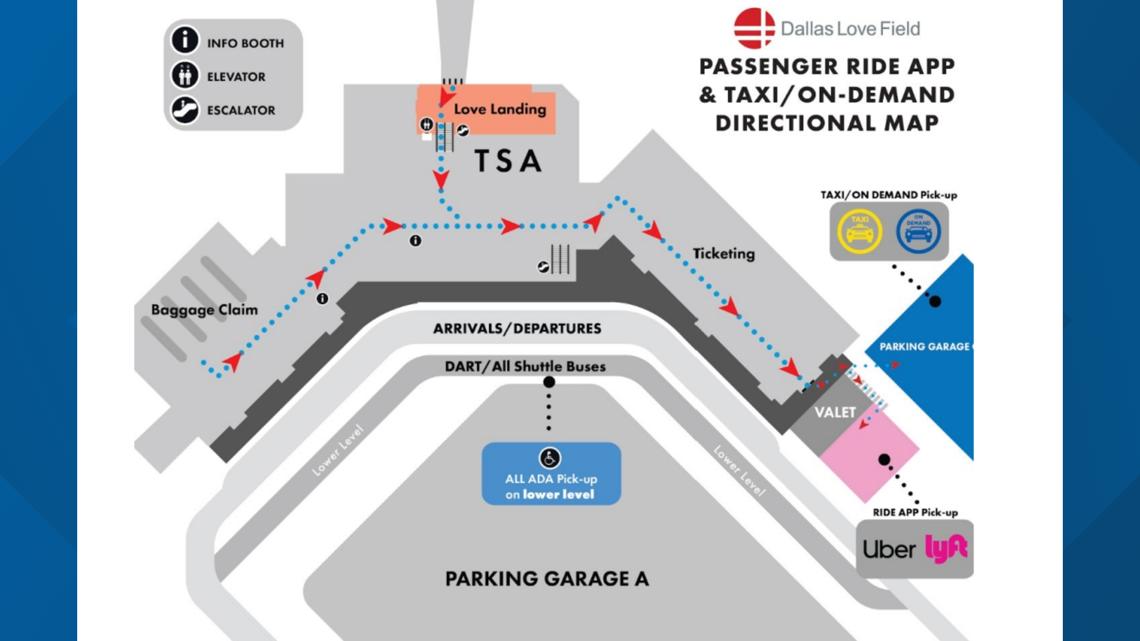The current rideshare pickup location is on the ground level of parking garage B, which is a lengthy walk of more than nine minutes from the terminal exit.
DALLAS — Hundreds (if not more ) complaints later, Dallas Love Field Airport is moving its much-maligned rideshare pickup location for companies like Uber and Lyft.
The new location, which goes into effect Friday, Jan. 3, will be at the current valet pavilion area on the southeast side of the terminal, airport officials announced Monday. The valet pavilion will be reconfigured to accommodate the rideshare pickups, as well as the current valet parking needs. Taxi and on-demand pickup options will be available at the nearby garage C.
The current rideshare pickup location is on the ground level of parking garage B, which is a lengthy walk of more than nine minutes from the terminal exit and baggage claim areas. The garage B location started in September but was soon followed by hundreds of complaints from travelers deeming it “halfway to Houston” and “a mess.”


The garage B area was aimed at reducing curbside congestion outside of the airport’s main exit, where the rideshare pickup zone was previously located. But after the surge in complaints, the airport announced plans earlier this year to move the pickup location by January.
In a memo to Dallas City Council earlier this year, Assistant City Manager Deve Rastogi characterized the feedback on the garage B pickup location as “extreme dissatisfaction.”
Airport officials on Monday said the walk from baggage claim to the new rideshare pickup zone will take travelers about six minutes.
“To improve the stakeholder experience at Dallas Love Field and facilitate more organized and streamlined transportation operations, the Department of Aviation analyzed multiple locations to relocate the pick-up area,” airport officials said in a news release. “The valet pavilion and Garage C Level One were determined to be the most efficient locations due to their proximity and the comparative ease with which the solution could be implemented.”